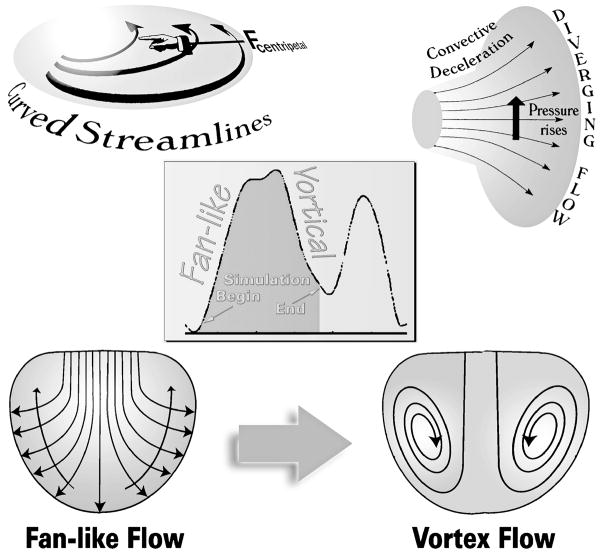Fig. 3.
As blood fans away from the central stream toward the endocardial walls, the convective deceleration effect tends, by the Bernoulli mechanism, to elevate downstream pressure opposing ventricular inflow (top right). There is an additional convective pressure decrease normal to the curved fanning streamlines (top left), which tends to decrease pressure in the direction of the chamber’s base and away from the endocardial walls (long arrows crossing streamlines, lower left). During the upstroke of the E-wave, these combined adverse convective pressure effects are opposed by the local acceleration gradient, which favors forward flow. During the E-wave downstroke, they are joined in sense and augmented by the local deceleration gradient and can now reverse the flow. This leads to disruption of the boundary between oncoming blood and endocardial walls, or “flow separation,” and to the formation of a toroidal vortex that surrounds the central core (lower right). Center inset: volumetric filling rate calculated by numerical differentiation of RV chamber volume obtained from dynamic representations using combined real-time 3-D echocardiographic and sonomicrometric measurements; small arrows point to representative beginning and ending points of the FI simulations. (Adapted, somewhat modified, from Pasipoularides [1], by permission of PMPH-USA.)

